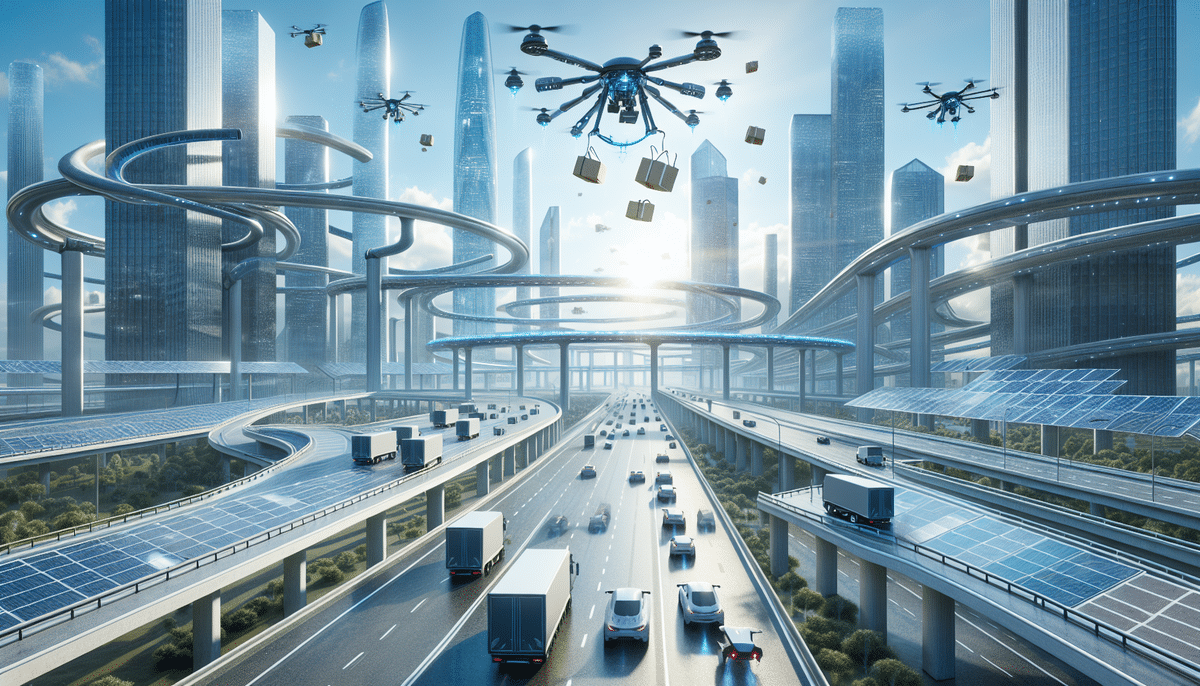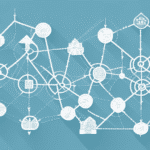Exploring the Future of Distribution: What to Expect in the Coming Years
The world of distribution and logistics has been evolving rapidly over the past few years, driven by new technologies, innovative business models, and emerging markets. These changes are reshaping the way goods are moved and delivered globally. In this article, we delve into the current state of distribution, the challenges faced by industry players, and the key trends poised to shape the future of distribution in the years ahead.
The Current State of Distribution and Its Challenges
Today’s distribution landscape is highly fragmented and complex, involving numerous players from transportation and logistics providers to retailers and e-commerce stores. This intricate supply chain structure introduces several challenges, including increased lead times, higher transportation costs, and frequent supply chain disruptions caused by natural disasters and geopolitical tensions.
Moreover, sustainability is becoming a pressing concern in distribution. The rise of e-commerce has led to increased transportation emissions and packaging waste, impacting the environment significantly. Companies are exploring alternative transportation methods such as electric vehicles and drones, alongside sustainable packaging solutions to mitigate their carbon footprint. However, these initiatives come with challenges like high implementation costs and regulatory hurdles. Balancing efficiency with sustainability is crucial for the long-term success of the distribution industry.
Developing Trends in Distribution Technologies
To address these challenges, logistics providers are increasingly adopting advanced technologies like automation, artificial intelligence (AI), and the Internet of Things (IoT). These technologies are transforming the distribution landscape by enabling faster, more efficient, and cost-effective movement of goods. For instance, automation and robotics in warehouses enhance productivity and reduce errors and labor costs. AI optimizes route planning, demand forecasting, and inventory management, making supply chains more resilient and responsive.
The use of drones and autonomous vehicles is also on the rise in the distribution industry. Drones facilitate last-mile delivery in urban areas prone to traffic congestion, while autonomous vehicles are being tested for long-haul transportation, promising reduced transportation costs and increased efficiency. Additionally, blockchain technology is being explored to enhance transparency and security in supply chain management by providing a decentralized and tamper-proof record of transactions. As these technologies become more integrated, they have the potential to standardize and streamline supply chain operations.
The Impact of E-commerce on Traditional Distribution Models
The advent of e-commerce platforms like Amazon and Alibaba has significantly disrupted traditional distribution models. These platforms demand fast and affordable delivery, challenging conventional systems like the hub-and-spoke model. In response, new distribution models such as direct-to-consumer delivery and same-day delivery have emerged to meet the expectations of today’s consumers.
E-commerce has also shifted distribution towards smaller, more frequent deliveries, requiring more flexible and agile distribution systems capable of handling smaller shipments with rapid turnaround times. Furthermore, the integration of technology in distribution—ranging from automated warehouses to delivery drones—has improved efficiency and sped up delivery times. This technological shift has created new job opportunities in robotics and data analytics, while also necessitating that workers acquire new skills to keep pace with industry changes.
The Future of Autonomous Vehicles in Distribution and Logistics
Autonomous vehicles represent a transformative trend in distribution and logistics. Self-driving trucks, drones, and other unmanned vehicles are being piloted by logistics providers and tech companies to reduce transportation costs, accelerate delivery times, and enhance road safety. However, the widespread adoption of autonomous vehicles faces regulatory and technological challenges.
Advanced infrastructure is essential for autonomous vehicles, including high-quality mapping data, reliable communication networks, and sophisticated sensors. Additionally, there are concerns about the impact on employment, as automation may render certain jobs obsolete while creating new roles in technology management and maintenance. Despite these challenges, experts anticipate that autonomous vehicles will revolutionize goods transportation and play a pivotal role in the future of distribution and logistics.
The Role of Artificial Intelligence in Optimizing Distribution Operations
Artificial Intelligence (AI) is poised to significantly impact the future of distribution. AI algorithms can analyze vast amounts of data to provide actionable insights into inventory management, route optimization, and demand forecasting. AI-powered chatbots and virtual assistants are enhancing customer service and improving the overall shopping experience.
Moreover, AI aids in quality control and defect detection by analyzing product images to identify and eliminate defects, ensuring high-quality deliveries and reducing return costs. In warehouse management, AI optimizes product placement and accelerates item retrieval, boosting operational efficiency. Overall, AI has the potential to revolutionize distribution operations by enhancing efficiency, accuracy, and customer satisfaction.
Green Distribution: Sustainability and Environmental Concerns in Logistics
As environmental concerns grow, sustainability has become a critical focus for logistics providers. Green distribution practices, such as using alternative fuels, optimizing transportation routes, and reducing waste, are increasingly adopted to minimize the environmental impact of logistics operations.
Consumer demand for sustainable products and services is a major driver of green distribution. Companies are responding by implementing eco-friendly practices to meet consumer expectations. Additionally, technology plays a significant role in green distribution, with data analytics optimizing transportation routes to reduce fuel consumption and sensors monitoring the condition of goods to ensure efficient and sustainable storage and transportation.
The Importance of Data Analytics in Distribution Management
Data analytics is becoming indispensable in managing distribution operations effectively. From tracking shipments and inventory levels to monitoring supplier performance and customer behavior, data analytics provides real-time insights into every aspect of the supply chain. Leveraging these data insights allows logistics providers to gain a competitive advantage, improve decision-making, and enhance overall business performance.
Emerging Markets and Their Impact on Global Distribution Networks
The growth of the middle class in emerging markets like China, India, and Brazil is driving increased demand for foreign goods, leading to the expansion of global distribution networks. Logistics providers are establishing new trade routes and supply chain partnerships across different regions to capitalize on these opportunities. However, rising protectionism and trade tensions, such as those between the US and China, pose challenges by disrupting global supply chains and necessitating greater adaptability and resilience in distribution networks.
Innovations in Last-Mile Delivery: Meeting the Demands of Today's Customers
Last-mile delivery—the final step of the supply chain from the warehouse to the customer's doorstep—is increasingly critical for logistics providers and e-commerce companies. Consumers now expect fast and convenient delivery options, including same-day and two-hour deliveries. In response, companies are exploring innovative last-mile delivery models such as locker systems, drones, and autonomous vehicles to meet these demands efficiently.
Collaboration Strategies for Successful Distribution Partnerships
In a competitive and complex distribution landscape, collaboration and partnerships are essential for success. Logistics providers and retailers are forming alliances to leverage each other’s strengths, creating more integrated and efficient supply chains. Collaborative strategies may include data sharing, co-branding initiatives, and joint investments in infrastructure, all aimed at enhancing supply chain efficiency and reducing costs.
The Future of Warehousing: Robotics, Automation, and Digitalization
As distribution networks grow more complex and the demand for faster delivery increases, warehousing operations are undergoing significant transformations. Warehouses are becoming more automated and digitalized, with robots and self-driving vehicles handling manual tasks. Technologies like augmented reality (AR) and virtual reality (VR) are being implemented to improve employee training and optimize warehouse operations, leading to increased efficiency and accuracy.
Overcoming Supply Chain Disruptions: Best Practices for Risk Management
Supply chain disruptions pose significant challenges to the distribution industry. Effective risk management strategies are essential to mitigate these disruptions. Best practices include assessing potential risks, identifying critical points in the supply chain, and developing contingency plans to address disruptions. Enhanced supply chain visibility allows companies to detect potential issues early, enabling proactive measures to prevent major disruptions.
The Role of Blockchain Technology in Revolutionizing the Supply Chain
Blockchain technology, renowned for its use in cryptocurrencies, is increasingly being explored for supply chain management. By providing a decentralized and secure ledger of goods and transactions, blockchain enhances real-time tracking and accountability throughout the supply chain, from raw materials to final delivery. This technology can reduce fraud, improve transparency, and boost overall supply chain efficiency, making it a game-changer for the industry.
Conclusion: Preparing for the Future of Distribution
The future of distribution will be shaped by greater automation, advanced technologies, and enhanced collaboration. The adoption of new supply chain models, such as direct-to-consumer and same-day delivery, will continue to evolve. Logistics providers that invest in these trends and prepare for potential disruptions will be well-positioned to thrive in the coming years. Embracing innovation and sustainability will be key to achieving long-term success in the dynamic field of distribution and logistics.






















